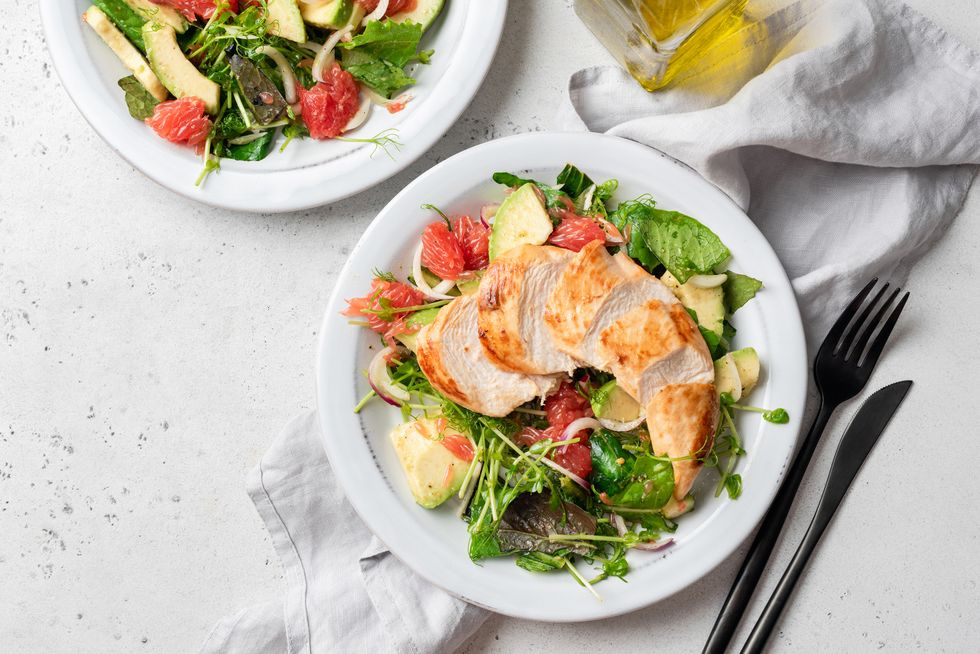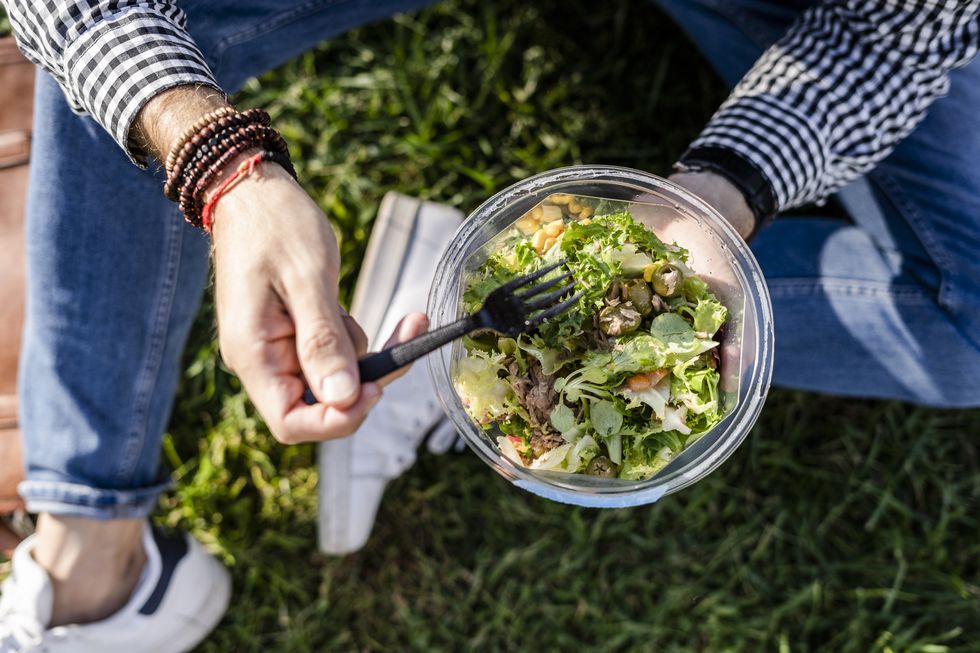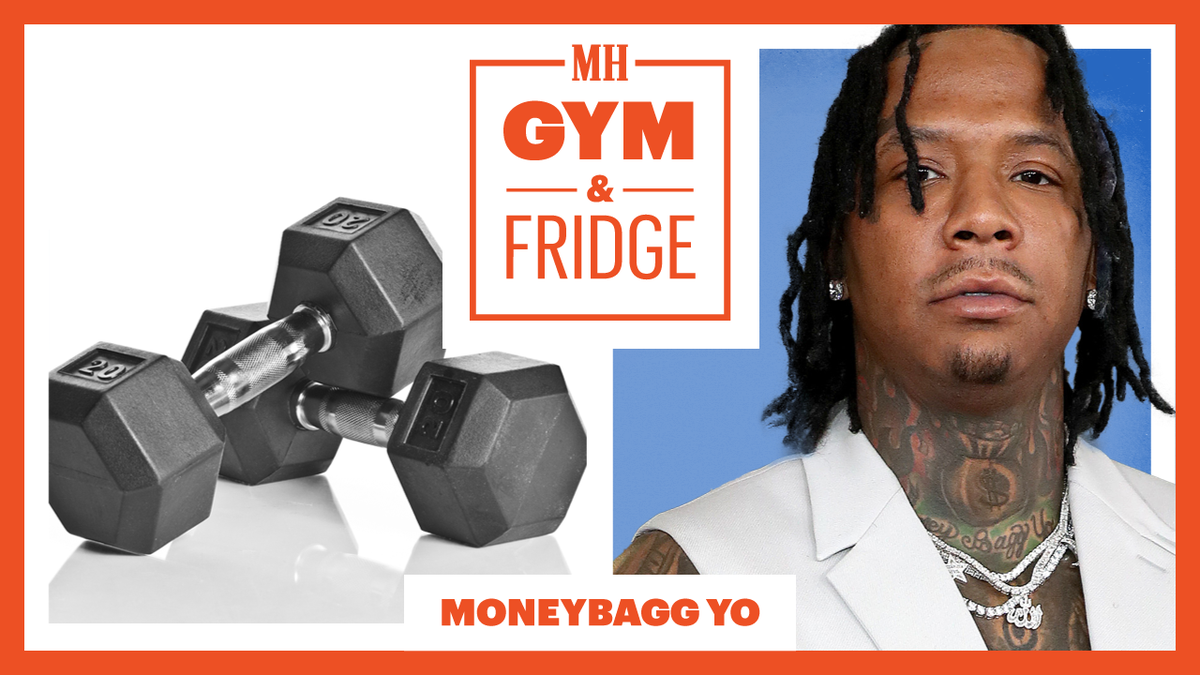EATING PROTEIN helps you build muscle, recover more quickly after intense workouts, maintain a healthy weight, and stay full for longer.
So, it makes sense that you’d want to keep upping your protein intake.
In the past year, 52 percent of Americans have followed a specific eating pattern, and high-protein diets were their top choice, with 18 percent of people embracing them, according to the International Food Information Council (IFIC) 2023 Food and Health Survey.
Kris Sollid, R.D., senior director of nutrition communications at IFIC, says high-protein hasn’t made the survey’s list since 2018, when just 4 percent said they were following the diet. And, he’s not sure why exactly protein is now more of a focus.
“Two potential influencers since 2018 can’t be overlooked: the impact of Covid-19 on dietary choices and the rise in availability of plant-based protein food and beverage products,” he says.
A desire to lose weight, improve their physical appearance, feel better, have more energy, and guard against potential health problems were the main reasons people chose to adopt specific diets, the IFIC survey found.
Adding more protein to your diet can offer a range of benefits, especially if you lift weights and do intense workouts, says Leah Silberman, R.D., a registered dietitian at Medical Offices of Manhattan.
But, how much protein you need on a high-protein diet varies depending on your age, weight, level of physical activity, and overall health. And, you can consume too much, she says, “While protein is an essential nutrient for the body, consuming excessive amounts can have potential drawbacks.”
Dietitians explain what exactly is considered a high-protein diet, how to add more protein to your meals, and how it can benefit you.
What Exactly Is a High-Protein Diet?
Protein is found in your muscles, bones, skin, hair, and other parts of your body, according to the Harvard T.H. Chan School of Public Health. It helps fuel several chemical reactions in your body, including powering the hemoglobin that moves oxygen in your blood.
So, consuming protein is good for you, but defining what’s considered “high protein” is tricky, Sollid says.
“For example, some protein recommendations are based on the percentage of calories in a diet that comes from protein,” he says. “Other protein recommendations are based on body weight.”
Adults should get at least 0.8 grams of protein for every kilogram of body weight each day—which equates to about 7 grams per 20 pounds of body weight.
Consuming any amount over that recommendation would be considered a high-protein diet, Silberman says.
Here’s what a high-protein diet can look like:
High Protein Based on Body Weight
One high-protein rule for the average person is 1.2 grams or more of protein per kilogram of body weight, Sollid says. If you do intense workouts and weight training, you could up your protein to 1.75 grams.
If you opt for 1.75 grams of protein per kilogram of body weight a day, that would equal:
- About 125 grams per day for a 154-pound person
- About 160 grams per day for a 200-pound person
High Protein Based on Percent of Calories
Protein intake can vary depending on your caloric needs, which are influenced by your age, size, fitness level, and other factors, Sollid says.
Another way to increase protein is to make protein-rich foods a significant portion of your daily calories. For instance, Sollid says high protein could be defined as more than 22 percent of your total daily calories. Here are some examples:
- About 80 grams of protein per day for a 1,500-calorie diet
- Around 110 grams of protein per day for a 2,000-calorie diet
- Around 140 grams of protein per day for a 2,500-calorie diet
- Around 135 grams of protein per day for a 3,000-calorie diet
What Are the Benefits of Protein?
Protein has been shown to help with weight loss and weight management because it makes you feel full for longer. One study found that when overweight women increased their protein intake from 15 percent to 30 percent, they ate about 400 fewer calories a day.
Research also shows that eating more protein helps you maintain muscle mass and build muscles and strength during strength training.
Protein has potential metabolism-boosting effects. It could also help lower your blood pressure and promotes bone health.
Can You Eat Too Much Protein?
While you can eat too much of anything, Sollid says most healthy people don’t need to worry about consuming too much protein. But if you have health problems, like kidney disease, you need to monitor your protein intake.
There’s no official “threshold for too much protein,” since individual tolerances vary, Silberman says. However, she adds that exceeding 2 grams of protein per kilogram of body weight may not offer any extra benefits.
What Are the Downsides of a High-Protein Diet?
Focusing too much on protein could mean you’re neglecting other important nutrients, like fiber, Sollid says.
“Fiber is only found in plant foods, so depending on the source of protein, a high-protein diet that overly emphasizes animal foods and doesn’t include enough fruits, vegetables, and whole grains could also be a low-fiber diet,” he explains.
Excessive protein intake long term can strain your kidneys, especially if you’re at risk for kidney problems, Silberman says.
And, be sure to drink more water if you’re upping your protein, she adds, “It can lead to an increased risk of dehydration, as the body requires more water to metabolize and eliminate the byproducts of protein breakdown.”
What Time of Day Should You Eat Protein?
Your body needs protein throughout the day, so you don’t need to focus on eating it at specific times, Silberman says.
Protein offers the most benefit for your muscles when you eat it evenly across three meals, rather than consuming it all in one meal, Sollid says.
However, consuming protein within an hour of working out can support muscle repair and synthesis, Silberman adds.
How to Add More Protein to Your Diet
Protein can come from a variety of plant and animal sources—what you choose to eat is a personal preference. Lean meat and poultry, fish, eggs, and dairy products are good animal sources. Beans, nuts, seeds, and soy products offer plant-based protein.
Working more of these foods into your meals and snacks will help you increase your protein intake. Just be sure to check nutritional labels, Sollid suggests.
For instance, soy milk often contains more protein than other plant-based dairy products, and Greek yogurt and Icelandic skyr contain more protein than regular yogurt.
“Even if you aren’t looking to consume more protein, think about diversifying your protein choices to include more beans, chickpeas, lentils, peas, seafood, and soy foods,” Sollid says.
Erica Sweeney is a writer who mostly covers health, wellness and careers. She has written for The New York Times, HuffPost, Teen Vogue, Parade, Money, Business Insider and many more.






Comments are closed.